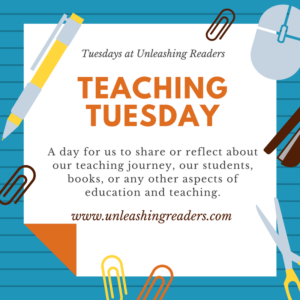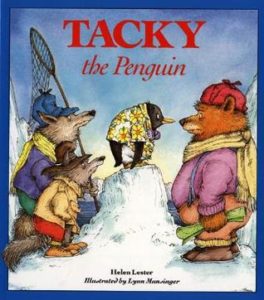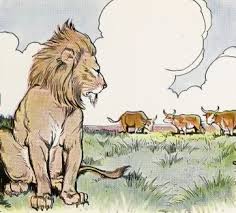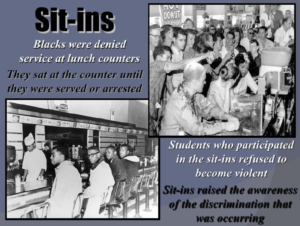Just so we all have the same definition of close reading, I wanted to share how I define it:
The process of close reading is reading a short, worthy text more than once to get deeper into its meaning.
(See “A Secret About Close Reading” for more information.)
Here is a fun close reading activity I did with my reading classes a couple of weeks ago.
Standards for this lesson: RL.1 & RI.1 (Inference & text evidence), RL.2 (Theme), RI.2 (Central Idea), RL.3 (Narrative elements interact)
Tacky the Penguin by Helen Lester is a much more complex text than it first seems, so I really wanted to take this fun text and push my students’ thinking to realize that Tacky teaches us more than they first thought.
First read: For the first read of Tacky the Penguin, I just had my students enjoy the story. I love watching kids see this book for the first time because he is such a ridiculous yet awesome penguin.
Second read: When we read the story again, this time I chunked the text and had them take notes about a different characters’ emotions for each section. They then went on our Canvas discussion board and made an inference about how the character was feeling based on their notes and included evidence.
“The other penguins are much more accepting of Tacky at the end. In the text it shows that all the penguins hugged Tacky since his oddness had scared the hunters away and saved them. This action showed that even though they might disagree on how to do things they were still thankful of him.” -EX, 8th grade
“I think that the other penguins, Goodly, Lovely, Angel, Neatly and Perfect are happy that Tacky is around. In the story it is showing all the penguins celebrating that the hunters were gone. Usually when you are celebrating it is because someone has accomplished something and you feel happy for them. So, you can conclude that the other penguins are happy that Tacky is around because he got rid of the hunters and without Tacky they might’ve died.” -JK, 6th grade
For the final section of the text, I asked them to think about the theme of the story, and they answered their inferred theme with evidence on the discussion board.
“I think the theme of Tacky the penguin is that differences can be good. I think that because at first the other penguins didn’t like Tacky because he was very different in the way he acted. They thought he was annoying and didn’t really include him in their group. At the end, they appreciate him because he saved them from the hunters, so his differences were good.” -AN, 8th grade
“The theme is to treat everyone fairly. Because in the beginning the other penguins treated Tacky badly, by excluding him, being annoyed at his greets, singing, and diving. But when Tacky acted like a hero they all appreciated him like they should of in the beginning.” -AK, 8th grade
“I think the theme of TACKY THE PENGUIN is to always be yourself. In the beginning of the story, the other penguins didn’t seem to really like Tacky because he did things so differently from them. However, as the middle towards end of the story, Tacky uses that to his advantage to scare away the hunters. So really, because Tacky was himself, he saved the day!” -DV, 7th grade
As we know, there are many themes that can be taken from a story, and most of the themes I received were spot on and focused primarily on how Tacky may seem odd but that doesn’t mean being different is bad. But there was one theme that I didn’t have any students pick up on, and I felt it was a big one. So, for the third read, I added in another text.
Third read: For the third read, I had my students read an Aesop Fable to connect with Tacky. “The Lion and the Three Bullocks” has the theme “In Unity is Strength” because the bulls survive the predator because they work together. The students did a wonderful job realizing that this theme connected to Tacky because it was only when all the of the penguins worked together that they were able to ward off the hunters.
“The theme “Unity is Strength” works for both books because together they defeated the enemy(ies). In Tacky the Penguin it says, “ Tacky began to sing, and from behind the block of ice came the voices of his companions, all singing as loudly and dreadfully as they could.” This shows that together the penguins can work together to be strong. The next page says “The hunters could not stand the horrible singing” This evidence illustrates that together as a team they can do anything. In Aesop For Children (Three Bullocks and a Lion), it says that a hungry lion is looking for his next meal. He was only sitting and watching because all of them were together so he would lose. In a little bit the bullocks separated and it was the lion’s time to strike (He ate them). This shows that when you are together you can be even stronger then when you were alone.” -EN, 7th grade
At this point, I was so proud of the connections my students were making, but it was still on a level where they were not connecting it to life–they saw it as a penguin and bullocks lesson mostly. This meant that I added in another text that I had them close read:
Scila Elworthy’s TED Talk is titled “Fighting with Nonviolence” and shares how fighting violence with violence is not successful while using nonviolence has been successful. I love TED Talks because you have the video and the transcript! What a great text for the classroom! (And thank you Jennifer Shettel for pointing me in this direction!)
First read: We watched the first 5 minutes and 11 seconds of the TED talk, and I gave each student a Post-It note. I asked them to write down words that stuck out to them. We then shared the words and defined any words they didn’t know.
Second read: For their second read of the text, they went to the transcript and were to focus on the central idea of this section of the text. Each person wrote down their own central idea.
Then I did a variety on one of the discussion ideas that Ricki shared in her Engaging Classroom Discussion Techniques post. Kind of like in Facts of Five, I had students then go into groups of three and come up with a consensus of a central idea together. They then wrote these on sentences strips to display in the room. We also discussed each one and talked about the supporting evidence for each central idea. I called it “Most Important Point.”
“As a group for the “most important point activity” we came up with the point that “solving a problem with violence only ever causes more violence”. Toward the end of the ted talk the speaker gives an example of when her ‘heroine’ was faced with guns during a protest and solved it by walking up to them and getting them to put their guns down. Had she not solved that problem this way it can be assumed that the soldiers would have shot them. By solving a situation with non violence she avoided the problem all together. We concluded from this, and the other points she made in ted talk including Nelson Mandela and her own personal anecdote about non violence, that that was the central point.” -KA, 8th grade
Third read: For the culminating task for all of these texts, I added in one more text to truly make all of this connect to reality. I knew I wanted to pick an image from the Civil Rights Movement because it is a true example of this idea at work. I introduced my students to sit-ins.
I then asked, “Why did we watch this TED Talk and why did I share the Sit-In images after reading Tacky the Penguin and the Aesop Fable? How do they all connect? Write a short paragraph explaining the connection, and remember to Restate, Answer, have Text evidence, and Explain/elaborate.”
“All of these connect because they all show them going against things together. In “Tacky the Penguin” all of the penguins started singing in the end together, driving them away. If it was only Tacky singing, the hunters might not have gone away if the other penguins had not shown up. In “Three Bullocks and a Lion”, the lion would not attack them when they were together because he knew he was no match for all three of them combined. In the Sit- In photo, there are four people sitting at a counter, and in the other photo, it shows them getting drinks poured on them from other people in the restaurant. If there was only one person sitting at the counter, the point would not have been proven as well as it would if there were four. All of them show that when they are together, they are stronger.” -MA, 7th grade
“The Ted Talk, Sit-in images, Tacky the Penguin, and Aesop Fable connect because they show how if we stick together and try to solve conflict in nonviolent ways, we will not have to resolve problems with more fighting. The Ted Talk says that bullies use violence to intimidate, terrorize, and undermine, but “only very rarely in few cases does it work to use more violence.” This just makes people more and more violent. An example is when the “Students who participated in sit-ins refused to become violent” even when people were not treating them fair by not serving them or even pouring a drink on them. Tacky the Penguin helped save all the penguins from being taken away by hunters because he had the attitude that people should be friendly and kind to each other and because he acted like this, it scared the hunters and they ran away. In the Aesop Fable, the bulls were able to keep the lion from eating them by staying close and being strong together. When they began to argue and separated from each other, they were not strong enough alone to keep from being attacked. “It was now an easy matter for the lion to attack them one at a time, and this he proceeded to do with the greatest satisfaction and relish.” This shows that we need each other to be strong and reach our goals and when we begin to fight, we lose our strength against enemies. We can control all of this, like she says, “It’s my response, my attitude, to oppression that I’ve got control over, and that I can do something about.” -DA, 6th grade
I was so impressed with my students’ deep thinking, connections, inferences, and elaboration! And overall they truly loved the activity, and I think that it truly shows that a text to analyze can be more than the canon!







Thank you Kellee for generously sharing a fabulous intertextual learning sequence. Your student responses show their deep understanding of such a complex issue.